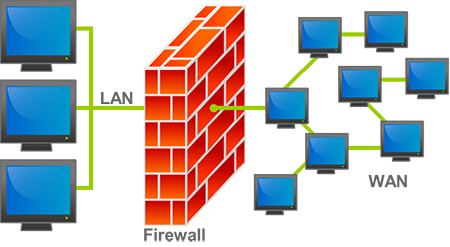Every website requires security. Online servers, like personal computers, can be targeted for attack. You need a way to keep hackers and other unauthorized traffic out. This is where firewalls come into play.
If you leave your website unprotected, malicious actors can wreak havoc on your server, which is why you need to keep your WordPress site safe. One of your first tasks must be to install a firewall.
However, there are numerous types of firewalls, and you may be unsure where to begin. Let's go over firewalls and their various types.
About Firewall
A firewall is a form of network security device that tracks and filters outgoing and incoming network traffic based on earlier established security policies in an organization. A firewall is essentially the barrier that stands between a private internal network and the open Internet at its most basic level. The primary feature of a firewall is to let safe traffic in while blocking dangerous traffic.
Different types of firewalls
Depending on how they work, firewalls come in a wide variety of types. Several of the most popular firewalls include:

Packet filtering firewalls
The most common type of network layer firewall is a packet filtering firewall. This firewall is also called a static firewall. This firewall monitors incoming and outgoing packets and determines whether they should pass or fail based on ports, source and destination IP addresses, and protocols. Packet filtering firewalls are fast, cheap, and effective. However, the network security they provide is critical. These firewalls cannot protect against malicious data packets arising from trusted source IPs because they cannot analyze the content of data packets.
Stateful inspection firewalls
This type of firewall can be utilized to manage how data packets move through a firewall. These firewalls can evaluate whether or not a packet belongs to a particular session. It only lets communication if the session between the two endpoints is properly established; otherwise, communication is blocked. Although these security requirements provide advanced security, they consume a significant amount of system resources and can noticeably slow down traffic. As a result, they are vulnerable to denial-of-service attacks. This type of firewall is also called dynamic packet filtering.
Circuit-level gateways
At the session layer of the OSI model, a circuit-level gateway firewall keeps track of TCP (Transmission Control Protocol) connections and sessions to ensure the security of the established connections. Circuit-level gateways are cheap, easy to use, and don't significantly affect network performance. However, because they can't examine the contents of data packets, they aren't a sufficient security solution on their own. If a data packet has a valid TCP handshake, a circuit-level gateway can be easily avoided by malware.
Proxy firewalls
An application-level gateway, also referred to as a proxy firewall, needs to be implemented using a proxy device. Every time a client requests to connect to a web page, the proxy server intercepts the message, preventing an outsider from directly accessing your internal network. Under the guise of the client, the proxy sends the message to the web server. This hides the client's identity and location, shielding them from any constraints or potential dangers.
Next-generation firewalls
A next-generation firewall has capabilities that go beyond those of a traditional, stateful firewall. A traditional firewall inspects incoming and outgoing network traffic statefully; however, a next-generation firewall comes with features including such inclusive prevention systems, application awareness and control, and cloud-delivered threat intelligence.
Software firewall
Our computers are protected by a software firewall. If you have multiple devices, the software must be installed on each one. Since it needs to be compatible with the host, it must be configured separately for each. This type of firewall can protect our system from external threats like unauthorized access, malicious attacks, and so on. The firewall warns you if you open a specific email or try to access an insecure website

Hardware firewall
A hardware firewall is physical equipment that, like a server, filters traffic to and from a computer. A network cable is typically plugged directly into a server or computer, but with a hardware firewall, the lead is first connected to the firewall. Since all network links pass through it, this firewall inspects both outbound and inbound network traffic. Access controls and other policies are therefore enforced. It is also called an Appliance Firewall.
Cloud firewall
These firewalls can regulate the flow of data among external domains and your internal system. A cloud firewall, as compared to traditional firewalls, filters data at the cloud level. These firewalls aid in combating today's sophisticated threats and protecting your operation's data.
On a modern personal computer, you usually don't have to do much because most operating systems include a firewall. In terms of your website, too many hosts simply do not care about securing their servers, so it is your responsibility to protect yourself.
Download Comodo's free firewall software along with the best antivirus software for online threat protection. Visit for more.





